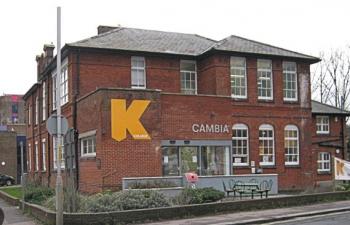Dover School of Art
The School began life in 1868 founded by Sir Henry Cole (1808-1882) under the 'auspices' of the South Kensington Schools. It limped along in temporary premises until new rooms in Marine house were secured and it reopened in 1873. This was again only a temporary measure until a newer more permanent building on Northampton Street with a harbour view was acquired and the 'new' art school opened its doors on November 3rd, 1877. The School soon housed fewer than 200 full and part-time fee-paying students and received much praise from visiting inspectors although its income was minimal. Its first Principal Master, William Henry East, (1848-1926) was appointed in 1878 and the school was renamed the Municipal School of Science and Art.
East held the post until he retired in 1920 and did much to raise the stature of the School which was often lauded as the 'best art school outside London'. In 1925 such was the stature of William East that he was elected as Mayor of Dover. However, his appointment did last long as he caught pneumonia and died on June 2nd 1926. The once vibrant School gradually went into decline and in 1926 was again renamed Dover Technical Institute and the following year as the Municipal Science Art and Technical Institute. At the outbreak of World War II the Art School was requisitioned as a training centre and its pupils and indeed most school children in Dover were evacuated to Wales for their safety. In 1960 Kent Council took the opportunity to amalgamate the Dover and Folkestone colleges and in 1966 the college at Dover started an apprenticeship scheme whereby the students took the City and Guilds examination. In 18 years, 200 students took the course and only one failed the exam.
Folkestone School of Art was always a 'poor relation' with its near neighbour in Dover. Little is known of its early years but its beginnings were during the last decade of the 19th century. After World War I, it was merged under a single principal John Lees Robinson, (1888-1967). However, although officially a single school, they reverted to their original titles in 1931.
Get Unlimited Access from just £5


